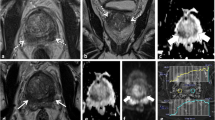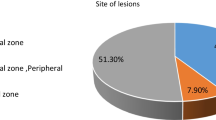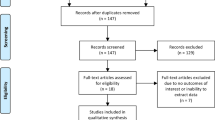Abstract
Background
Prostate heterogeneity on multi-parametric MRI (mpMRI) may confound image interpretation by obscuring lesions; systematic biopsy may have a role in this context.
Purpose
To determine if prostate heterogeneity (1) correlates with clinical risk factors for prostate cancer and (2) associates with higher-grade tumor in systematic biopsy (SB), compared with MRI-directed target biopsy (MDTB), i.e., SB > MDTB, thus providing a rationale for combined biopsy.
Methods
IRB-approved retrospective study included men who underwent mpMRI, SB, and MDTB between 2015 and 2017. Regions of interest were applied to the entire transition zone (TZ) and peripheral zone (PZ) on T2-weighted imaging (T2WI), apparent diffusion coefficient maps (ADC), and early dynamic contrast-enhanced (DCE) images on the midgland slice. Mean signal intensities and standard deviation (SD) of each zone were calculated. SD served as a measure of heterogeneity. Spearman’s rank correlation analysis of clinical and imaging variables was performed. Univariate logistic regression was used to determine if any imaging variable associated with SB > MDTB.
Results
93 patients were included. Significant correlations included age and TZ ADC heterogeneity (rho = 0.34, p = 0.013), PSA density, and mean TZ ADC (rho = − 0.29, p = 0.049). PZ T2WI heterogeneity correlated with PZ ADC heterogeneity (rho = 0.48, p < 0.001). PZ DCE heterogeneity correlated with TZ DCE heterogeneity (rho = 0.46, p < 0.001). TZ ADC heterogeneity was associated with SB > MDTB prior to multiple comparison correction (p = 0.032). p value after correction was 0.24.
Conclusion
TZ ADC heterogeneity correlated with age and may reflect prostatic hyperplasia and/or prostate cancer. PZ heterogeneity, possibly a measure of prostatitis, correlated with TZ hyperplasia and/or inflammation. TZ ADC heterogeneity was associated with SB > MDTB with p value of < 0.05 prior to multiple correction; future investigation is needed to further elucidate significance of ADC heterogeneity in prostate imaging.


Similar content being viewed by others
References
Weinreb, J.C., et al., PI-RADS Prostate Imaging - Reporting and Data System: 2015, Version 2. Eur Urol, 2016. 69(1): p. 16-40.
Radtke, J.P., et al., Combined Clinical Parameters and Multiparametric Magnetic Resonance Imaging for Advanced Risk Modeling of Prostate Cancer-Patient-tailored Risk Stratification Can Reduce Unnecessary Biopsies. Eur Urol, 2017. 72(6): p. 888-896.
Padhani, A.R., et al., PI-RADS Steering Committee: The PI-RADS Multiparametric MRI and MRI-directed Biopsy Pathway. Radiology, 2019. 292(2): p. 464-474.
Elkhoury, F.F., et al., Comparison of Targeted vs Systematic Prostate Biopsy in Men Who Are Biopsy Naive: The Prospective Assessment of Image Registration in the Diagnosis of Prostate Cancer (PAIREDCAP) Study. JAMA Surg, 2019. 154(9): p. 811-818.
Rouviere, O., et al., Use of prostate systematic and targeted biopsy on the basis of multiparametric MRI in biopsy-naive patients (MRI-FIRST): a prospective, multicentre, paired diagnostic study. Lancet Oncol, 2019. 20(1): p. 100-109.
Kasivisvanathan, V., et al., MRI-Targeted or Standard Biopsy for Prostate-Cancer Diagnosis. N Engl J Med, 2018. 378(19): p. 1767-1777.
Fehr, D., et al., Automatic classification of prostate cancer Gleason scores from multiparametric magnetic resonance images. Proc Natl Acad Sci U S A, 2015. 112(46): p. E6265-73.
Niu, X.K., et al., Clinical Application of Biparametric MRI Texture Analysis for Detection and Evaluation of High-Grade Prostate Cancer in Zone-Specific Regions. AJR Am J Roentgenol, 2018. 210(3): p. 549-556.
Nketiah, G., et al., T2-weighted MRI-derived textural features reflect prostate cancer aggressiveness: preliminary results. Eur Radiol, 2017. 27(7): p. 3050-3059.
Wright, J.L., et al., Prostate cancer specific mortality and Gleason 7 disease differences in prostate cancer outcomes between cases with Gleason 4 + 3 and Gleason 3 + 4 tumors in a population based cohort. J Urol, 2009. 182(6): p. 2702-7.
Bai, H., et al., Multiparametric Magnetic Resonance Imaging-Based Peritumoral Radiomics for Preoperative Prediction of the Presence of Extracapsular Extension With Prostate Cancer. J Magn Reson Imaging, 2021.
Gong, L., et al., Noninvasive Prediction of High-Grade Prostate Cancer via Biparametric MRI Radiomics. J Magn Reson Imaging, 2020. 52(4): p. 1102-1109.
Krauss, T., et al., MRI phenotype of the prostate: Transition zone radiomics analysis improves explanation of prostate-specific antigen (PSA) serum level compared to volume measurement alone. Eur J Radiol, 2020. 129: p. 109063.
Schwier, M., et al., Repeatability of Multiparametric Prostate MRI Radiomics Features. Sci Rep, 2019. 9(1): p. 9441.
Woznicki, P., et al., Multiparametric MRI for Prostate Cancer Characterization: Combined Use of Radiomics Model with PI-RADS and Clinical Parameters. Cancers (Basel), 2020. 12(7).
Zhang, H., et al., Diagnostic nomogram based on intralesional and perilesional radiomics features and clinical factors of clinically significant prostate cancer. J Magn Reson Imaging, 2021. 53(5): p. 1550-1558.
Akin, O., et al., Transition zone prostate cancers: features, detection, localization, and staging at endorectal MR imaging. Radiology, 2006. 239(3): p. 784-92.
Oto, A., et al., Prostate cancer: differentiation of central gland cancer from benign prostatic hyperplasia by using diffusion-weighted and dynamic contrast-enhanced MR imaging. Radiology, 2010. 257(3): p. 715-23.
Wasserman, N.F., et al., Use of MRI for Lobar Classification of Benign Prostatic Hyperplasia: Potential Phenotypic Biomarkers for Research on Treatment Strategies. American Journal of Roentgenology, 2015. 205(3): p. 564-571.
Chatterjee, A., et al., Revisiting quantitative multi-parametric MRI of benign prostatic hyperplasia and its differentiation from transition zone cancer. Abdom Radiol (NY), 2019. 44(6): p. 2233-2243.
Guneyli, S., et al., Magnetic resonance imaging of benign prostatic hyperplasia. Diagn Interv Radiol, 2016. 22(3): p. 215-9.
Moosavi, B., et al., Multiparametric MRI of the anterior prostate gland: clinical-radiological-histopathological correlation. Clin Radiol, 2016. 71(5): p. 405-17.
Ren, J., et al., T(2)-weighted combined with diffusion-weighted images for evaluating prostatic transition zone tumors at 3 Tesla. Future Oncol, 2013. 9(4): p. 585-93.
Langer, D.L., et al., Prostate tissue composition and MR measurements: investigating the relationships between ADC, T2, K(trans), v(e), and corresponding histologic features. Radiology, 2010. 255(2): p. 485-94.
Rosenkrantz, A.B., et al., Computed diffusion-weighted imaging of the prostate at 3 T: impact on image quality and tumour detection. Eur Radiol, 2013. 23(11): p. 3170-7.
Pagniez, M.A., et al., Predictive Factors of Missed Clinically Significant Prostate Cancers in Men with Negative Magnetic Resonance Imaging: A Systematic Review and Meta-Analysis. J Urol, 2020. 204(1): p. 24-32.
Delongchamps, N.B., et al., Evaluation of prostatitis in autopsied prostates--is chronic inflammation more associated with benign prostatic hyperplasia or cancer? J Urol, 2008. 179(5): p. 1736-40.
Nickel, J.C., et al., The relationship between prostate inflammation and lower urinary tract symptoms: examination of baseline data from the REDUCE trial. Eur Urol, 2008. 54(6): p. 1379-84.
Langlais, C.S., et al., Obesity at Diagnosis and Prostate Cancer Prognosis and Recurrence Risk Following Primary Treatment by Radical Prostatectomy. Cancer Epidemiol Biomarkers Prev, 2019. 28(11): p. 1917-1925.
Westphalen, A.C., et al., Variability of the Positive Predictive Value of PI-RADS for Prostate MRI across 26 Centers: Experience of the Society of Abdominal Radiology Prostate Cancer Disease-focused Panel. Radiology, 2020. 296(1): p. 76-84.
Funding
Weill Cornell Medicine is the recipient of an in-kind research grant from Siemens Healthineers.
Author information
Authors and Affiliations
Corresponding author
Ethics declarations
Conflict of interest
No other relevant disclosures.
Additional information
Publisher's Note
Springer Nature remains neutral with regard to jurisdictional claims in published maps and institutional affiliations.
Rights and permissions
About this article
Cite this article
Chen, C., Yang, Z., Sweeney, E. et al. Prostate heterogeneity correlates with clinical features on multiparametric MRI. Abdom Radiol 46, 5369–5376 (2021). https://doi.org/10.1007/s00261-021-03221-6
Received:
Revised:
Accepted:
Published:
Issue Date:
DOI: https://doi.org/10.1007/s00261-021-03221-6




